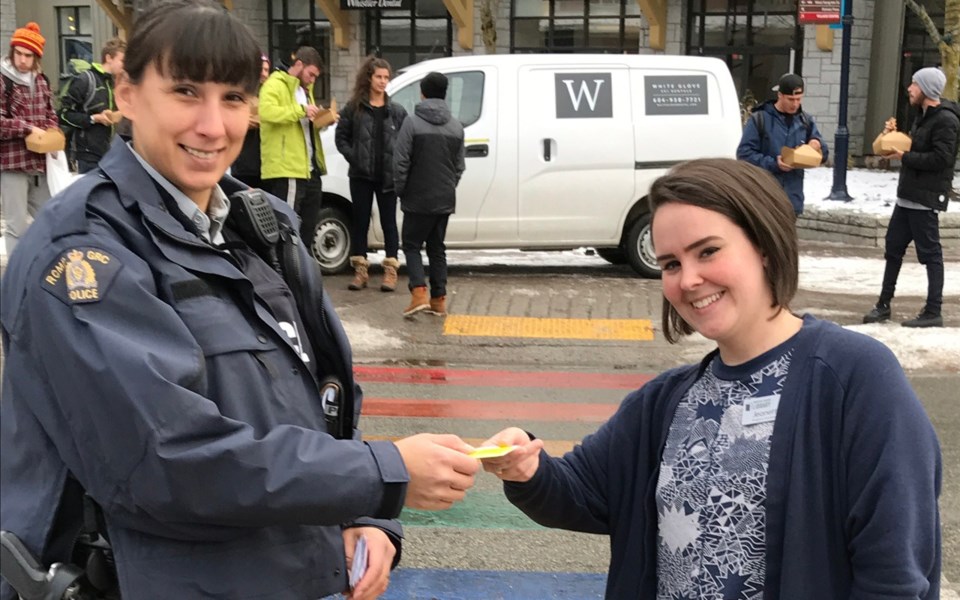If you've spent any time driving Whistler's darkened winter streets, there's a decent chance you've come across some darkly dressed pedestrians.
"I have no doubt that there has been a massive number of close calls," said Whistler RCMP Sgt. Rob Knapton.
"In five years I've been here I've had some myself, a few at least, and it's a combination of factors: low lighting, people wearing dark clothing, people crossing where they're not supposed to be, a whole bunch of things that unfortunately come together and it really is a concern."
On Jan. 27, an Ontario man was struck by a van on Highway 99 shortly after 1 a.m. and taken to hospital.
But accidents where pedestrians are hit by cars are luckily uncommon, Knapton said.
"It's pretty rare, thankfully — knock on wood — but I would say that the potential for problems or the potential for that to happen is significant," he said.
It's part of the reason the Whistler RCMP, in partnership with the Resort Municipality of Whistler (RMOW), ICBC, BC Transit and other community partners, draw attention to the issue each year through the Walk Safe program.
"Forty-three per cent of all crashes where a pedestrian gets injured happen in just four months of the year, October to January, as visibility and conditions get worse," said Harvey Kooner, local ICBC road safety coordinator.
"When driving, we need to take a break from our phones, be extra alert at intersections and be ready to yield the right-of-way. When walking, we need to help drivers see us by staying focused on the road and making eye contact with drivers."
In early November, Kooner was part of an outreach program in Whistler putting an emphasis on pedestrian safety.
Volunteers distributed free reflectors at different locations, with the remaining going to the local Whistler RCMP detachment at 4315 Blackcomb Way.
Anyone who missed out can swing by the detachment to pick up a free reflector.
But even without the reflectors, there are many ways to make yourself visible, Knapton said.
"It doesn't take a lot. Even a $2 armband or a flashing strobe light, there is all sorts of stuff out there now that's fairly affordable, so there's no reason why we can't make ourselves more visible," he said.
It's also best to stay off the roads when you can — the RMOW now has a map showing all the snow-cleared sections of the Valley Trail at www.whistler.ca/maps.
Other tips for pedestrians include crossing the road only in dedicated areas, and making sure drivers are aware of you by making eye contact before you cross.
But the onus isn't just on the pedestrian.
"Drivers need to be aware of their surroundings and drive in a safe manner — really, you have to be able to stop at any time," Knapton said.
"The fact is that there are those times we all are going to encounter where there is a need to suddenly stop, and if we're not paying attention to our surroundings, and keeping aware continuously when we're driving, that can have disastrous consequences."
There's also a free shuttle to staff housing — BC Transit's Route 7 — co-funded by Whistler Blackcomb, the Fairmont and Gibbons. The service runs from Dec. 13 to Apr. 2, from 6 p.m. to 8 a.m.




